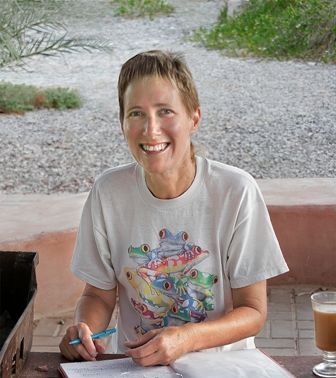Affiliation: University of North Carolina at Chapel Hill

Jodi Magness is with the Department of Religious Studies, University of North Carolina at Chapel Hill, where she is the Kenan Distinguished Professor for Teaching Excellence in Early Judaism. She holds her degrees from the Hebrew University of Jerusalem and the University of Pennsylvania (Ph.D.), and her areas of expertise are the archaeology of Palestine in the Roman, Byzantine and early Islamic Periods, ancient pottery, ancient synagogues, Qumran and the Dead Sea Scrolls, and the Roman army in the East. Professor Magness is currently the Director of the excavations at Huqoq, Israel and has also worked at Yotvata and Masada in Israel, Caesarea Maritima, the Athenian Agora, and ancient Corinth, Greece. She has published widely, was the recipient of the 2008 AIA Excellence in Undergraduate Teaching Award, and was a 2013/2014 AIA Joukowsky Lecturer. Professor Magness is the past president of the AIA.
A course by Jodi Magness, “The Holy Land Revealed” is available on DVD through The Teaching Company’s Great Courses at http://www.thegreatcourses.com/tgc/courses/course_detail.aspx?cid=6220
Since 2011, Professor Jodi Magness has been directing excavations in the ancient village of Huqoq in Israel’s Galilee. The excavations have brought to light the remains of a monumental Late Roman (fifth century) synagogue building paved with stunning and unique mosaics, including biblical scenes such as Noah’s Ark and the Tower of Babel, and the first non-biblical story ever discovered decorating an ancient synagogue. In this slide-illustrated lecture, Professor Magness describes these exciting finds.
Website on lecture topic: www.huqoq.org
In 1946-1947, the first Dead Sea Scrolls were discovered by accident near the site of Qumran. Eventually the remains of approximately 1000 scrolls were found in 11 caves surrounding Qumran. In this slide-illustrated lecture, we explore the archaeological remains of Qumran, which was inhabited by members of a Jewish sect who deposited the scrolls in the nearby caves, and examine the meaning and significance of the scrolls.
Short bibliography and/or website on lecture topic:
Jodi Magness, The Archaeology of Qumran and the Dead Sea Scrolls (Eerdmans 2002).
James C. VanderKam, The Dead Sea Scrolls Today (Eerdmans 1994) (there is an updated edition).